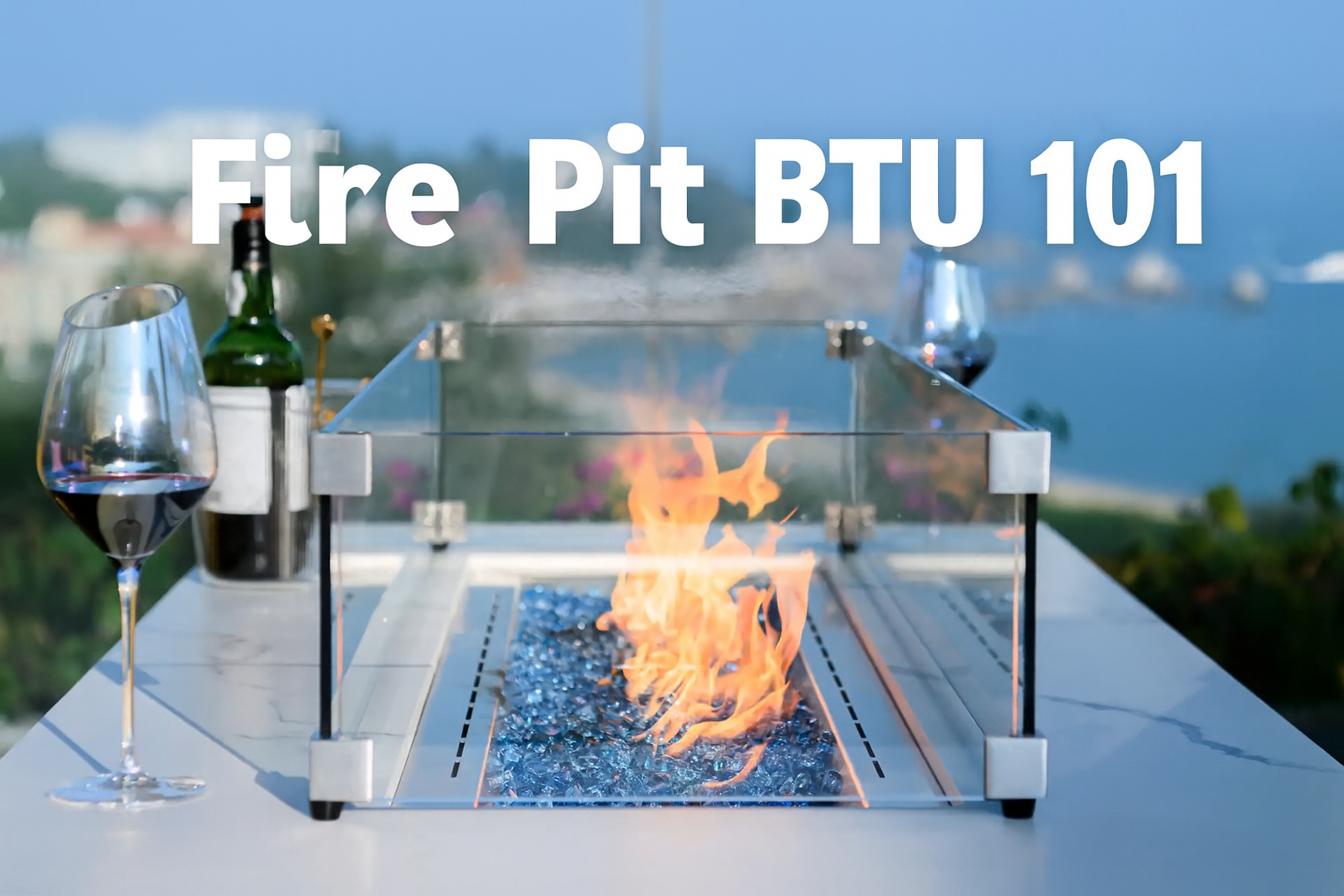Fire pits are a great way to add ambience, warmth and style to your patio, balcony or outdoor entertainment area. As with other heating appliances, the heat output of a fireplace is given in BTU (British Thermal Units) – this value directly determines its heating efficiency. So what BTU values should you consider when choosing one for your home?
📘 In short: A suitable BTU range for fireplaces is generally 40,000 to 50,000 BTU for small to medium-sized areas. For large outdoor areas, up to 200,000 BTU may be appropriate. The correct BTU selection depends on the area to be heated, the degree of wind protection/canopy and the local outdoor temperatures.
🔥 Why are BTU important? Fire tables extend the usage time of your outdoor space – especially in cooler months – and increase comfort and ambiance. Understanding the BTU rating and its impact on actual heat output will help you choose the right fire table for your outdoor space.
What matters: Area size – the larger the area, the higher the BTU rating should be. Protection from wind – covered or wind-protected zones usually require less BTU for the same level of thermal comfort. Climate zone – in regions with low outside temperatures, higher BTU values are usually required.
1 Fireplace BTU guide: The ideal heat output for your outdoor area
Whether it’s a balcony, patio or garden – a suitable fireplace provides pleasant warmth and a cozy atmosphere on cool evenings. In addition to design and size, knowledge of the BTU (British Thermal Unit) is crucial, as it determines the heat output and fuel consumption.
If you understand the meaning of BTU, you can select the fireplace specifically according to area, climate and use to achieve the ideal heat output.
2 What is a BTU?
BTU (British Thermal Unit) is a unit of measurement for thermal energy. It was originally defined as the amount of heat required to heat one pound of water by 1°F. Today it is used as a standard for measuring the heat output of appliances such as heaters, fireplaces or gas fires.
A higher BTU value means more heat output – but “more” is not always better. The optimum BTU value depends on the size, shielding and location of the outdoor area.
3 BTU and flame height
The flame height and color not only influence the appearance, but also the heating effect. In general:
A higher flame usually means more heat, while a blue flame burns more efficiently than an orange flame. The ratio between gas and air has a direct effect on the flame color, the burning temperature and the actual heat output.
4 BTU comparison by fuel type (depending on country and environment)
4.1 Wood Burning Fire Pit
The BTU output varies greatly depending on the type of wood and the size of the combustion chamber. Hardwoods such as oak or beech generate more heat than softwoods. Typical values are between 30,000 and 100,000 BTU. In some countries (e.g. Germany, Netherlands), environmental regulations apply to open wood fires – therefore check the local regulations in advance.
4.2 Natural gas fire pits
Natural gas burns at a lower intensity and therefore provides a gentler heat output. Typical values are between 30,000 and 60,000 BTU. Ideal for households with a permanently installed gas connection (e.g. in Germany, Austria or the Netherlands). Advantage: even, clean combustion. Disadvantage: low mobility.
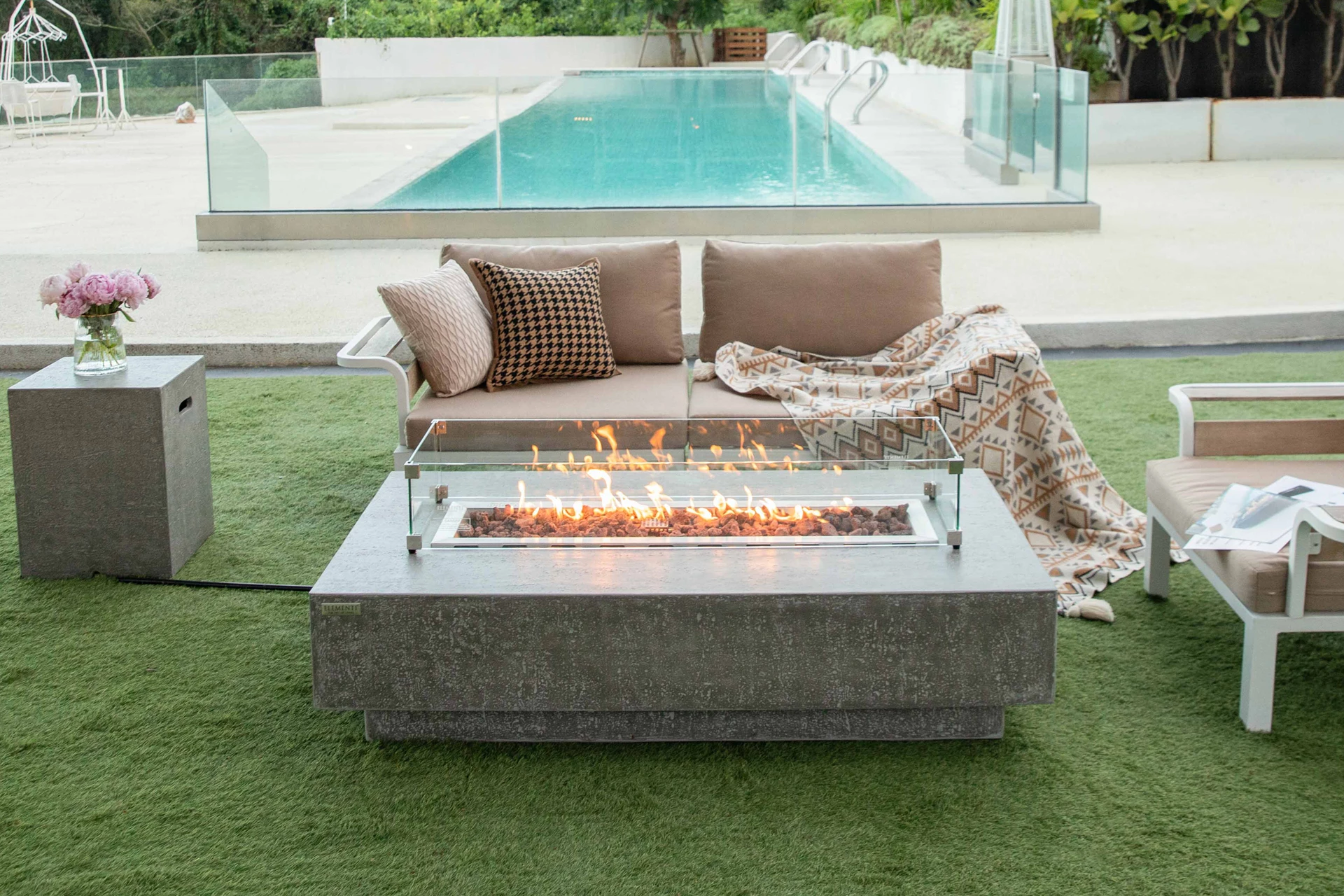
4.3 Bioethanol fire pits (Bioethanol Fire Pit)
Bioethanol burns cleanly, smoke-free and odor-free – perfect for balconies, conservatories or interiors. The BTU output is lower, usually 20,000 to 28,000 BTU. Particularly popular in northern regions or cities as no installation is required and there is no residue.
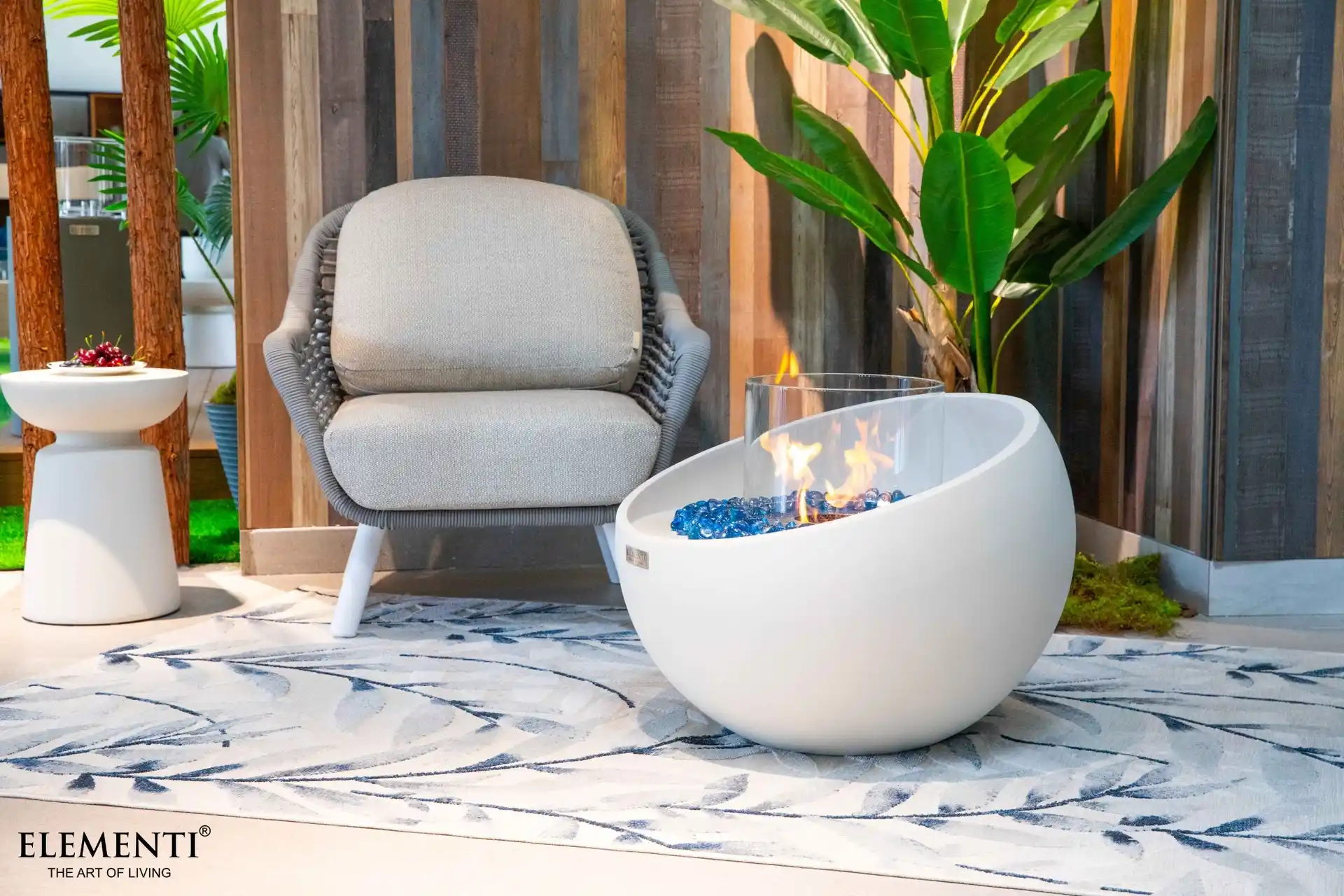
4.4 Propane fire pits (Propane Fire Pit)
Propane is the most popular fuel: high temperature, clean flame, mobile use. The BTU output ranges from
5 Heat output at various BTU levels
BTU Calculator5.1 30,000 BTU Fireplace
Suitable for small areas (approx. 25-30 m²), e.g. balconies or sheltered terraces. Recommended fuels: bioethanol or wood. Particularly suitable for milder climates, such as southern Europe (Italy, Spain) in spring or fall.
5.2 40,000 BTU fireplace
Medium heating capacity for areas up to approx. 40-50 m². Ideal for terraces or medium-sized gardens. Recommended fuels: propane or natural gas. Widely used in Central Europe (Germany, France, Switzerland).
5.3 50,000 BTU fireplace
High heat output for areas of 65-70 m². Provides pleasant warmth even on cool evenings. Recommended fuel: propane – efficient, inexpensive and flexible. Particularly suitable for cooler or windy regions.
6 Comparison: 40,000 BTU vs. 50,000 BTU
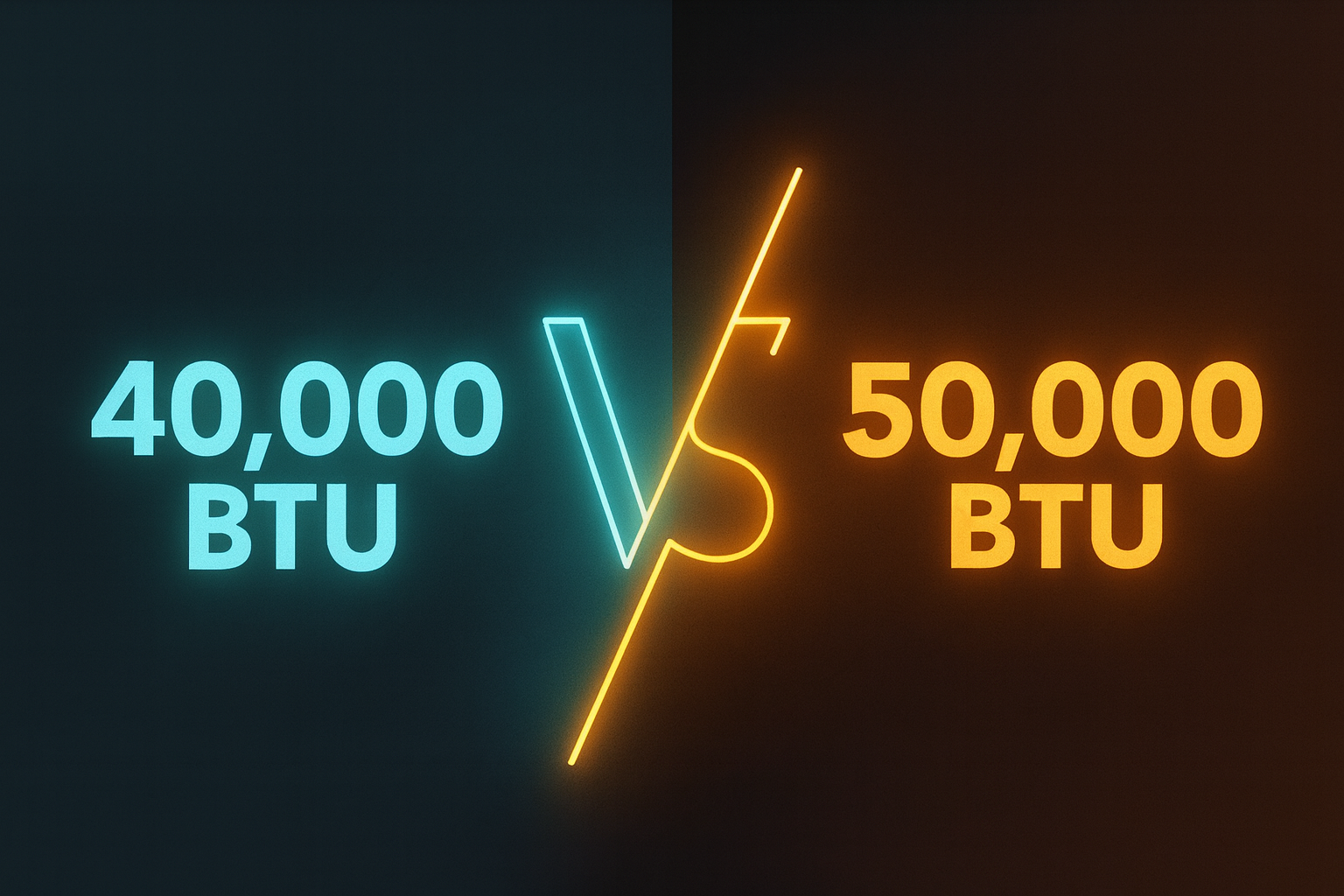
| Category | 40,000 BTU fireplace | 50,000 BTU fireplace |
|---|---|---|
| Recommended area | approx. 50 m² (terrace or garden) | approx. 70 m² (open courtyard or large terrace) |
| Effective radius of the heat | about 2.5 m | about 3 m |
| Recommended fuel | Natural gas / propane | Propane |
| Price range | approx. €500 – €1,500 | approx. €600 – €1,800 |
Although 50,000 BTU offers a more powerful output, a 40,000 BTU fireplace is perfectly adequate for smaller or partially covered areas. For open, windy areas (e.g. coastal regions or mountain areas), however, the 50,000 BTU variant is recommended.
7 Fireplaces with high output
Large models reach up to 200,000 BTU and can heat areas over 250 m². Such fireplaces are often used in hotels, resorts or outdoor restaurants – they are usually too powerful and energy-intensive for private gardens.
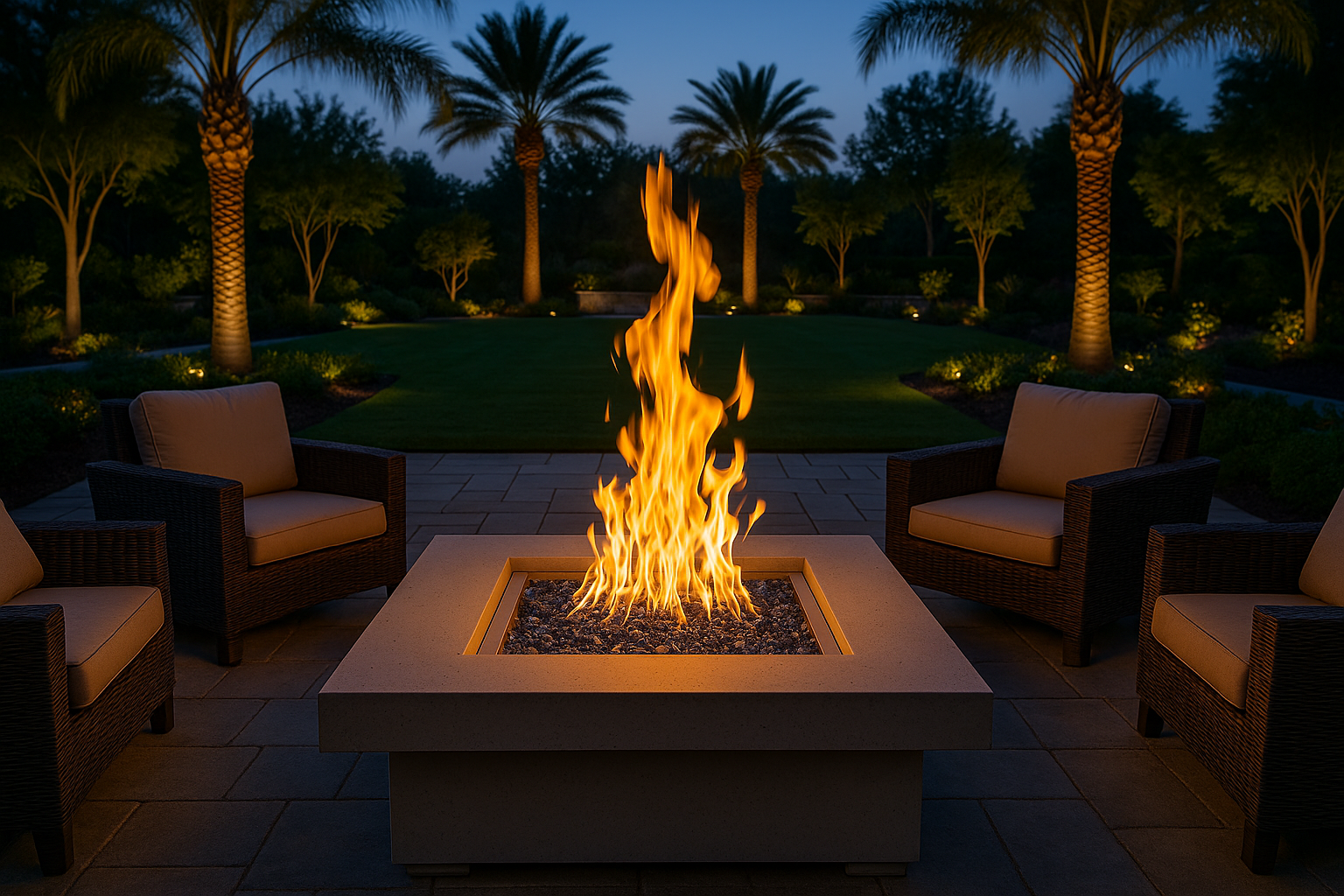
8 Conclusion
A fireplace is much more than just a heat source – it’s the centerpiece of your outdoor space. With the right BTU output, you can create a balance between comfort and energy efficiency:
30,000-40,000 BTU: small, sheltered areas such as balconies or patios;
50,000-100,000 BTU: Terraces, medium-sized gardens or family yards;
over 100,000 BTU: hotels, restaurants or large open spaces.
Choose according to room size, wind protection and climate – your fireplace will not only provide warmth, but also atmosphere and joie de vivre.









